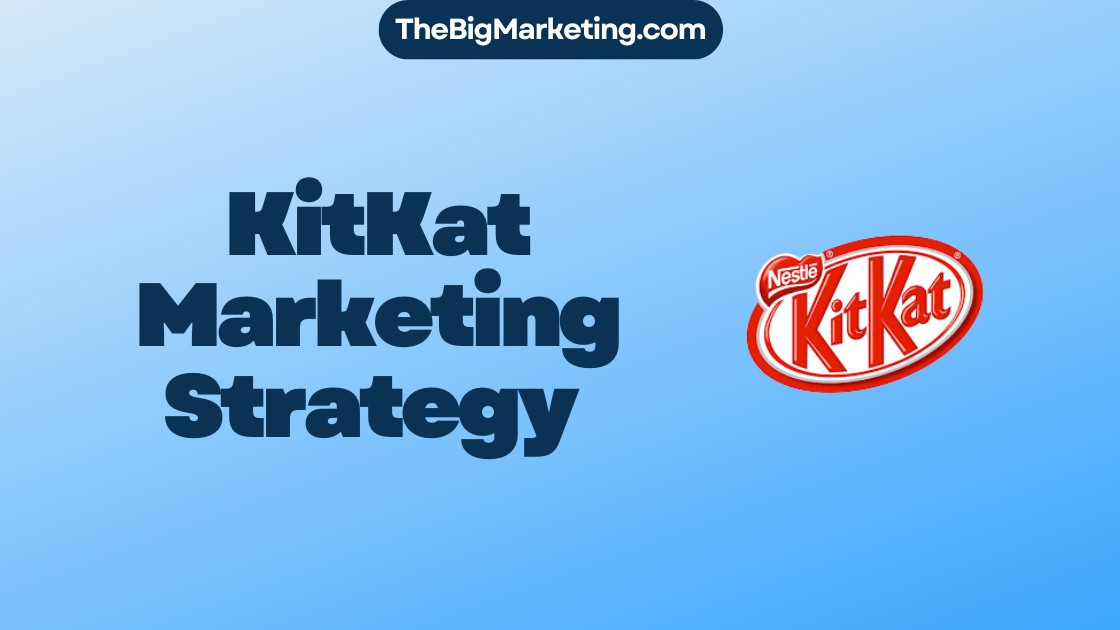Marketing is a crucial aspect of any business, playing a vital role in its success. But what is the purpose of marketing exactly? In simple terms, the purpose of marketing is to attract and engage an audience, effectively communicate the value of a company’s products or services, and ultimately drive conversions and sales.
Marketing objectives vary from company to company, but they all aim to achieve a common set of goals. By understanding the importance of marketing and the role it plays, businesses can develop effective strategies to reach their target audience, build brand loyalty, and ultimately achieve success in the marketplace.
To fulfill its purpose, marketing employs various strategies and techniques. These can include market research and analysis to understand consumer behavior, product development and pricing strategies, distribution methods, advertising campaigns, and more.
Key Takeaways:
- Marketing has the purpose of attracting and engaging an audience to drive conversions and sales.
- Marketing objectives aim to achieve common goals, such as reaching the target audience and building brand loyalty.
- Effective marketing strategies include market research, product development, pricing strategies, distribution methods, and advertising campaigns.
The Purpose of Marketing
Marketing plays a crucial role in businesses by helping attract consumers, increase brand awareness, and drive sales. The purpose of marketing is to effectively communicate a company’s product or service to its target audience and persuade them to take action. This section will explore the various aspects of marketing, including its objectives, strategies, goals, and functions.
Marketing Objectives
Marketing objectives are the specific goals that a company aims to achieve through its marketing efforts. These objectives can vary depending on the business’s needs and may include increasing brand visibility, generating leads, boosting customer engagement, driving conversions, or expanding market share. By clearly defining marketing objectives, businesses can align their strategies and measure their success.
Marketing Strategies
Marketing strategies refer to the plans and tactics implemented to achieve marketing objectives. These strategies involve a combination of activities, such as market research, identifying target audiences, developing compelling messaging, creating promotional campaigns, and leveraging various marketing channels. A well-defined marketing strategy helps businesses effectively reach their target audience and create a strong brand presence.
Marketing Goals
Marketing goals are the desired outcomes that businesses aim to achieve through their marketing activities. These goals typically align with the overall business objectives and may include increasing sales revenue, improving customer retention, expanding into new markets, enhancing brand reputation, or launching new products. Marketing goals provide a clear direction for marketing efforts and help measure the success of marketing campaigns.
Marketing Function
The marketing function encompasses all activities related to promoting and selling a product or service. It involves product development, pricing, distribution, market research, advertising, and sales. The marketing function plays a crucial role in understanding customer needs and preferences, identifying market opportunities, and creating strategies to effectively communicate the value proposition of a product or service to the target audience.
Overall, marketing serves the purpose of creating awareness, generating interest, building customer relationships, and driving business growth. It is a multifaceted discipline that requires a deep understanding of consumer behavior, market dynamics, and effective communication strategies. By strategically implementing marketing objectives, strategies, and goals, businesses can successfully connect with their target audience, differentiate themselves from competitors, and achieve sustainable success.
Modern Marketing Strategies
In the 21st century, businesses have access to a wide range of marketing strategies to effectively reach their target audience. Understanding the various types of marketing strategies and their strengths can help businesses make informed decisions to achieve their marketing goals.
Types of Marketing
There are several types of marketing strategies that businesses can utilize:
- Internet Marketing: Internet marketing focuses on establishing a strong online presence through website development, search engine optimization (SEO), email marketing, and online advertising. It leverages the power of the internet to connect with potential customers.
- Search Engine Optimization (SEO): SEO involves optimizing a website’s content and structure to rank higher in search engine results. By utilizing relevant keywords and providing valuable content, businesses can improve their visibility and attract organic traffic.
- Blog Marketing: Blog marketing is the process of creating and sharing informative blog posts to engage with the target audience. By providing valuable insights and establishing thought leadership in the industry, businesses can build trust and attract potential customers.
- Social Media Marketing: Social media marketing focuses on utilizing popular social media platforms such as Facebook, Instagram, and Twitter to create brand awareness, engage with the audience, and promote products or services. It allows businesses to connect with customers on a more personal level and build long-lasting relationships.
- Print Marketing: Print marketing involves traditional forms of advertising such as newspaper ads, magazines, brochures, and flyers. While digital marketing has gained prominence, print marketing still plays a significant role in reaching specific demographics and local audiences.
- Search Engine Marketing (SEM): Search engine marketing includes paid advertising on search engine result pages (SERPs). It enables businesses to display targeted ads to potential customers who are actively searching for products or services similar to what they offer.
- Video Marketing: Video marketing utilizes engaging and informative videos to capture the attention of the target audience. It can be used for product demonstrations, brand storytelling, customer testimonials, and more. With the rise of platforms like YouTube and TikTok, video marketing has become increasingly popular.
By incorporating these modern marketing strategies into their overall marketing efforts, businesses can effectively engage with their target audience, drive brand awareness, and ultimately increase sales.
| Marketing Strategy | Description |
|---|---|
| Internet Marketing | Focusing on establishing an online presence through tactics like SEO, email marketing, and online advertising. |
| Search Engine Optimization (SEO) | Optimizing a website’s content and structure to rank higher in search engine results. |
| Blog Marketing | Creating and sharing informative blog posts to engage with the target audience. |
| Social Media Marketing | Utilizing popular social media platforms to create brand awareness and engage with the audience. |
| Print Marketing | Using traditional forms of advertising such as newspaper ads, magazines, brochures, and flyers. |
| Search Engine Marketing (SEM) | Placing ads on search engine result pages to target potential customers actively searching for products or services. |
| Video Marketing | Creating engaging videos for product demonstrations, brand storytelling, customer testimonials, and more. |
Marketing and Advertising: Understanding the Difference
While marketing and advertising are related, they are not the same. Advertising is a component of marketing and focuses on spreading awareness of a product or service.
Marketing encompasses product development, market research, distribution, sales strategy, and customer support. It is a comprehensive approach to connecting with the audience, building the brand, and increasing sales.
Marketing is a strategic effort, usually paid for, to promote a product or service. It involves creating and delivering compelling messages through various channels such as television, radio, print media, and digital platforms. The goal of advertising is to capture the attention of potential customers, create interest, and ultimately persuade them to take action.
Key Differences between Marketing and Advertising
To further understand the distinction between marketing and advertising, let’s explore the key differences:
- Scope: Marketing deals with the overall strategies and activities involved in creating, communicating, and delivering value to customers. It encompasses a wide range of functions, including product development, market research, pricing, distribution, and customer support. Advertising, on the other hand, is a specific tactic within marketing that focuses on promoting and selling a product or service through persuasive messages.
- Function: Marketing functions as a bridge between the business and the customer. It involves understanding customer needs, identifying target markets, and developing strategies to satisfy those needs profitably. Advertising plays a crucial role in marketing by creating awareness, generating interest, and influencing consumer behavior.
- Goal: The primary goal of marketing is to drive sales and generate revenue by building strong customer relationships and delivering value. It aims to create a sustainable competitive advantage for the business. Advertising, on the other hand, focuses on capturing attention, creating brand awareness, and influencing purchase decisions.
The 4 Ps of Marketing
In the world of marketing, understanding the 4 Ps is essential to develop a successful strategy. The 4 Ps, as defined by E Jerome McCarthy, encompass the fundamental elements that shape the marketing approach of a business.
Product
The first P stands for product. It refers to the item or service that a company offers to its target audience. A well-designed product that caters to the needs and desires of the consumers is crucial for marketing success. The product should be of high quality, unique, and meet customer expectations.
Price
The second P represents price. Pricing is an important aspect that determines the value of the product in the eyes of the consumers. It involves finding the right balance between profitability for the business and affordability for the customers. Price should be set in a way that reflects the product’s value and meets the financial expectations of the target market.
Place
The third P is place, which refers to the distribution channels and locations where the product is made available to the customers. This includes both physical retail stores and online platforms. The goal is to ensure that the product is easily accessible and available at the right place and time for the consumers.
Promotion
The fourth P, promotion, involves the strategies and tactics used to create awareness about the product and generate sales. This includes advertising, public relations, sales promotions, and other promotional activities. The aim is to communicate the value of the product to the target audience and persuade them to make a purchase.
Overall, the 4 Ps of marketing play a critical role in every stage of a business. A well-designed product, an appropriate pricing strategy, efficient distribution channels, and effective promotional activities are the key drivers of marketing success. By carefully considering and implementing these elements, businesses can develop a comprehensive marketing plan that maximizes their chances of achieving their goals and reaching their target market.
| Product | Price | Place | Promotion |
|---|---|---|---|
| Physical goods or service offered by the company | Determines the cost customers are willing to pay | Includes distribution channels and locations | Advertising and other strategies to create awareness and generate sales |
The 7 Ps and 4 Cs of Marketing
While the original 4 Ps of marketing provide a solid foundation for developing marketing strategies, there are additional frameworks that offer a comprehensive approach. These frameworks, known as the 7 Ps of marketing and the 4 Cs of marketing, enable marketers to gain a deeper understanding of their target audience and develop more effective strategies.
The 7 Ps of marketing add three additional elements – people, process, and physical evidence – to the traditional 4 Ps (product, price, place, and promotion). By considering the importance of customer service, smooth processes, and tangible evidence in marketing efforts, businesses can enhance the overall customer experience. This emphasizes the need for businesses to not only focus on their products and promotional activities but also to prioritize customer satisfaction and ensure a seamless customer journey.
On the other hand, the 4 Cs of marketing shift the perspective from the company to the customer. It focuses on consumer wants and needs, costs, convenience, and communication. By understanding the customer’s perspective and tailoring marketing efforts to meet their needs, businesses can establish stronger connections with their target audience and deliver more compelling value propositions.
These frameworks provide marketers with a broader perspective on marketing strategies, allowing them to develop comprehensive and customer-centric approaches to their marketing efforts. By considering the 7 Ps and 4 Cs of marketing alongside the traditional 4 Ps, businesses can create more effective and impactful marketing strategies.
| Framework | Description |
|---|---|
| 4 Ps of Marketing | Product, Price, Place, Promotion |
| 7 Ps of Marketing | Product, Price, Place, Promotion, People, Process, Physical Evidence |
| 4 Cs of Marketing | Consumer Wants and Needs, Costs, Convenience, Communication |
Types of Marketing Strategies
When it comes to marketing strategies, businesses have two broad categories to choose from: traditional marketing strategies and digital marketing strategies. Each category encompasses various tactics and channels that can help organizations reach their target audience and achieve their marketing goals.
Traditional Marketing Strategies
Traditional marketing strategies refer to the conventional forms of marketing that have been used for decades. These strategies include:
- Outdoor Marketing: Utilizing billboards, posters, and signage to reach a wide audience.
- Print Marketing: Advertising in newspapers, magazines, brochures, and other printed materials.
- Direct Marketing: Reaching out directly to customers through mail, catalogs, flyers, and telemarketing.
- Electronic Marketing: Utilizing radio and television commercials to promote products or services.
- Event Marketing: Participating in trade shows, exhibitions, conferences, and other events to showcase offerings.
Digital Marketing Strategies
In the digital age, businesses can leverage various online channels and platforms to connect with their target audience. Digital marketing strategies include:
- Search Engine Marketing: Using paid search ads and search engine optimization (SEO) techniques to improve online visibility.
- Email Marketing: Creating personalized email campaigns to engage prospects and nurture customer relationships.
- Social Media Marketing: Promoting products or services on social media platforms like Facebook, Instagram, Twitter, and LinkedIn.
- Affiliate Marketing: Partnering with influencers or other businesses to promote offerings in exchange for a commission.
- Content Marketing: Creating and sharing valuable content, such as blog posts, videos, and infographics, to attract and engage the target audience.
Businesses should consider their target audience, industry, and marketing goals when choosing which marketing strategies to implement. An effective marketing strategy often involves a combination of both traditional and digital approaches, tailored to the specific needs and preferences of the target market.
| Traditional Marketing Strategies | Digital Marketing Strategies |
|---|---|
| Outdoor Marketing | Search Engine Marketing |
| Print Marketing | Email Marketing |
| Direct Marketing | Social Media Marketing |
| Electronic Marketing | Affiliate Marketing |
| Event Marketing | Content Marketing |
The Benefits of Marketing
Marketing plays a crucial role in the success of businesses, offering a wide range of benefits that contribute to brand growth and customer engagement. By implementing effective marketing strategies, businesses can achieve their goals and drive business success.
1. Audience Generation
One of the key advantages of marketing is its ability to generate awareness and interest in products or services. Through targeted campaigns and messaging, businesses can reach their target audience, attract new customers, and expand their customer base. By understanding customer needs and preferences, businesses can tailor their marketing efforts to resonate with their audience, increasing the likelihood of attracting potential buyers.
2. Inward Education
Marketing provides valuable opportunities for inward education, allowing businesses to gather essential information about their customers. This includes understanding their needs, wants, and pain points, as well as gathering feedback and insights. With this knowledge, businesses can refine their products or services, enhance customer experiences, and develop more effective marketing strategies that cater to their audience’s preferences and expectations.
3. Outward Education
Effective marketing serves as a powerful tool for outward education, enabling businesses to communicate their brand’s value proposition to customers. By showcasing the unique benefits and features of their products or services, businesses can differentiate themselves from competitors and build brand loyalty. Through compelling storytelling and persuasive messaging, marketing helps businesses create a strong brand identity and establish a meaningful connection with their target audience.
4. Brand Creation
Marketing plays a vital role in brand creation by building a positive reputation for businesses. Through consistent messaging, compelling visuals, and memorable experiences, marketing helps businesses carve out a distinct brand image in the minds of consumers. A strong brand creates trust, instills confidence, and sets businesses apart from their competitors. By investing in effective marketing strategies, businesses can establish themselves as industry leaders and create a lasting impression in the market.
Effective marketing strategies that generate audience interest, provide opportunities for education, and facilitate brand creation can result in increased customer engagement and loyalty. By leveraging the benefits of marketing, businesses can strengthen their market presence, drive sales, and ultimately achieve their marketing goals.
Conclusion
Marketing plays a crucial role in attracting customers and increasing brand awareness, contributing to the overall success of a business. Understanding the purpose of marketing and adopting effective strategies are key to achieving marketing goals and reaping the benefits. Whether using traditional or digital marketing techniques, businesses need to adapt and tailor their efforts to the changing landscape and the needs of their target audience.
Through marketing, businesses can generate awareness, educate customers both inwardly and outwardly, and create a strong brand presence. Effective marketing strategies can lead to increased customer engagement, loyalty, and ultimately drive sales. By leveraging the power of marketing, businesses can position themselves for success in the competitive market.
It is essential for businesses to recognize the importance of marketing and invest in strategies that align with their goals. Whether it’s through traditional channels like print and events, or digital platforms like social media and content marketing, a well-executed marketing strategy can make a significant impact. By staying up-to-date with trends, analyzing consumer behavior, and continuously refining their approach, businesses can stay ahead and leverage marketing to achieve their desired outcomes.




